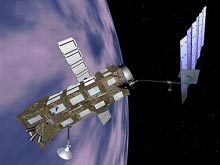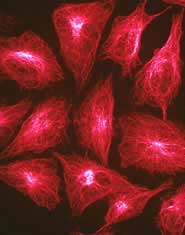“Nuclear fusion” is the melting of light nuclei into heavier ones, a process that according to the laws of physics releases enormous amounts of energy. For the past 50 years many scientists have sought ways of harnessing this fusion reaction under controlled reactor conditions as a safe, clean and practically inexhaustible source of energy. Siegbert Kuhn and his team at the Institute of Theoretical Physics at Innsbruck University are making a major contribution to these efforts and positioning Austri

During the night of 28 February/1 March, Envisat, ESA’s most powerful and sophisticated Earth observation satellite, will be launched by an Ariane 5 rocket from Europe’s spaceport in Kourou at 22:07 hrs Kourou time (02:07 hrs CET).
Built by a consortium of 50 companies led by Astrium, Envisat is the successor to ESA’s ERS satellites. With an array of ten instruments to monitor land, oceans, atmosphere and ice caps, it will provide the most complete set of observations ever achieved, to hel
The Sagittarius dwarf galaxy is our nearest neighbor. Yet it has been discovered only recently, in 1994, being hidden by the stars and dust in our own Galaxy, the Milky Way. It is however possible today to better know this companion galaxy, thanks to variable stars, the RR Lyrae, in which Sgr-dw is particularly rich. In a recent paper, Patrick Cseresnjes, from Paris Observatory, shows for the first time that Sgr-dw is not typical of other satellites of the Milky Way, but reveals instead striking simi

Land of nod is a learning experience
Cramming all night might help you to scrape through exams, but it won’t make you clever in the long run. Human and animal experiments are lending new support to a common parental adage: that a good night’s sleep is essential to learning.
“Modern life’s erosion of sleep time could be seriously short-changing our education potential,” warned Robert Stickgold of the Massachusetts Institute of Technology at the meeting of American Associatio

Glowing nanobots map microscopic surfaces.
Unleashing hordes of molecular robots to explore a surface’s terrain can produce maps of microscopic structures and devices with higher resolutions than those produced by conventional microscopes, new research shows.
Each robot has a ’light’ attached to it, allowing its random movements to be tracked around obstacles, through cracks or under overhangs. Adding the paths of hundreds of wandering nanobots together builds up a map of th
The phrase `rain stopped play` is gloomily familiar to fans of Wimbledon, international cricket test matches and other major sporting tournaments.
But cancelling matches because the pitch is waterlogged could be consigned to history, thanks to new technology which could revolutionise the international world of both professional and amateur sport.
Researchers at the University of Newcastle upon Tyne are starting trials involving a completely new concept – Electrokinetic Geosynthetic